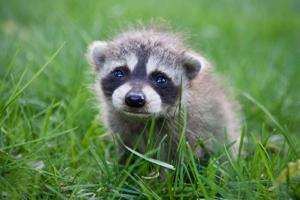Vermont is poised to launch a critical initiative this August aimed at curbing the escalating rates of rabies among its wildlife population, a proactive measure essential for both animal and public safety across the state.
This significant annual effort is a collaborative undertaking, bringing together the expertise of the U.S. Department of Agriculture’s Wildlife Services with key state entities including the Vermont Department of Health and the Vermont Fish & Wildlife Department. The distribution of oral rabies vaccine baits is scheduled to commence on August 1st, targeting specific counties where the need is most pressing.
Approximately 762,000 doses of the rabies vaccine bait, formulated as a sweet-smelling oral attractant for raccoons and skunks, will be strategically dispersed across multiple Vermont counties. The logistical operation involves a multi-pronged approach, utilizing low-flying airplanes for rural areas, helicopters for suburban landscapes, and ground teams meticulously placing baits by hand from slow-moving vehicles in residential zones.
Officials emphasize that these biannual bait drops are vital in slowing the progression of the rabies virus within wildlife populations. However, it is crucial to understand that achieving widespread immunity among animals is a gradual process that requires sustained effort over time to be effective.
The urgency of this campaign is underscored by a notable increase in rabies cases observed in Vermont. So far this year, 32 animals have tested positive for the virus, with raccoons accounting for 20 of these confirmed cases. This trend follows a concerning pattern from 2024, which saw 66 rabid animals, marking a substantial 74 percent increase from 2023 and a 69 percent rise above the 15-year average of 39 annual rabies cases reported since 2010.
“Rabies cases have been rising in Vermont in recent years, and this year is no exception,” stated Natalie Kwit, DVM, the state public health veterinarian with the Health Department. She further explained that, “Over time, the increased frequency and scope of these bait drops will help protect people and domestic animals who may come into contact with wildlife,” highlighting the long-term public health benefits.
Rabies, if left untreated, is invariably fatal to both humans and animals. The virus primarily spreads through the bite of an infected animal, and in Vermont, it is most frequently detected in species such as raccoons, skunks, foxes, bats, and woodchucks. The importance of vaccinating pets and livestock cannot be overstated, as unvaccinated animals are particularly vulnerable to contracting the disease.
For the public’s safety, each vaccine bait is imprinted with a toll-free number for inquiries regarding contact with the bait. In cases where a pet or child brings a bait home, it is essential to contact officials via the Vermont Rabies Hotline at 1-800-4-RABIES (1-800-472-2437) or the number on the bait. Furthermore, if a sick or strangely behaving wild or stray animal is encountered, or if there is concern about rabies exposure, the Vermont Rabies Hotline should be contacted immediately. Prompt washing of any animal bite wound with soap and water, followed by contacting a healthcare provider, is critical. For pets or farm animals bitten by wild or stray animals, contacting a veterinarian is necessary, especially since state law mandates rabies vaccination for dogs and cats, including barn cats, given the rarity of rabies in vaccinated animals.
Additional comprehensive information, including a detailed list of towns participating in the bait drop, can be accessed through the Rabies Vaccine Bait Drop Fact Sheet provided by state authorities.






Leave a Reply